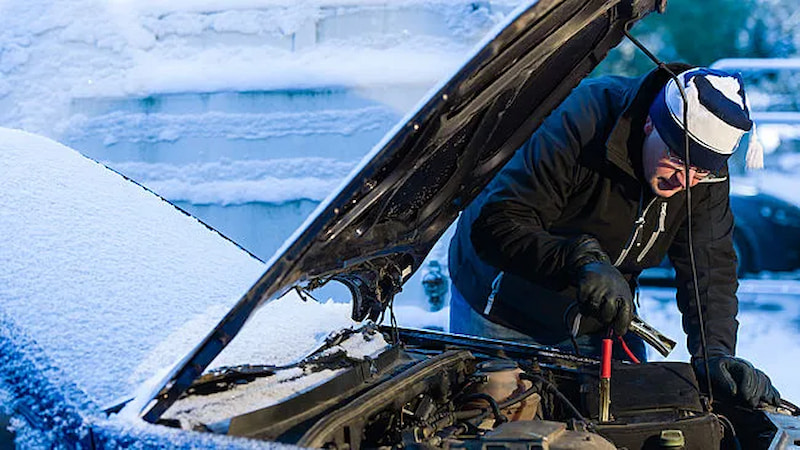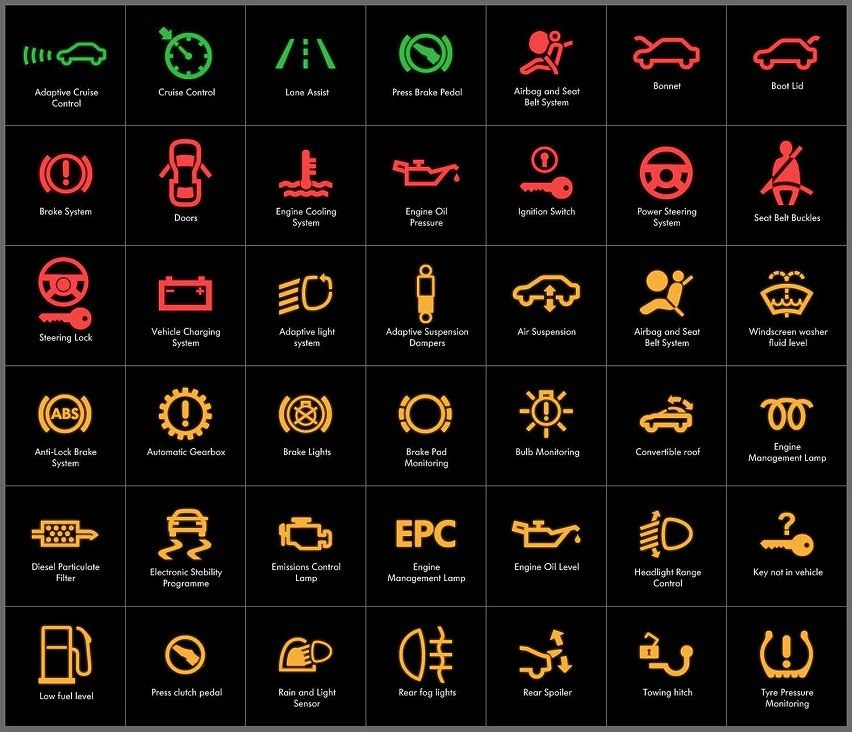Electric vehicles represent the most significant transformation in automotive technology since the invention of the internal combustion engine. As EV adoption accelerates across Canada, with government incentives and expanding charging infrastructure, many drivers are making the switch without fully understanding how electric vehicle maintenance differs from traditional automotive care.
The misconception that electric vehicles are "maintenance-free" has led some owners to neglect essential service needs, potentially compromising safety, performance, and longevity. While EVs do require significantly less maintenance than conventional vehicles, they have unique systems and components that demand specialized knowledge and care.
At BT Car Service, we've invested in EV-specific training and diagnostic equipment to serve Toronto's growing electric vehicle community. Our technicians understand that proper EV maintenance requires a different approach, specialized tools, and comprehensive knowledge of high-voltage systems, battery management, and electric drivetrain components.
Traditional Vehicle Maintenance
- Regular oil changes every 3,000-10,000 miles
- Air filter replacement
- Spark plug replacement
- Transmission service
- Coolant system maintenance
- Exhaust system service
- Fuel system cleaning
- Complex emissions testing
Electric Vehicle Maintenance
- No oil changes required
- Cabin air filter only
- No spark plugs to replace
- Single-speed transmission (minimal service)
- Battery cooling system check
- No exhaust system
- No fuel system
- No emissions testing needed
Understanding Electric Vehicle Systems
Electric vehicles operate on fundamentally different principles than conventional cars. Instead of complex internal combustion engines with hundreds of moving parts, EVs use relatively simple electric motors with fewer than 20 moving components. However, this simplicity is offset by sophisticated electronic systems that require specialized diagnostic equipment and expertise.
Key EV Components Requiring Maintenance
High-Voltage Battery Pack: The most expensive and critical component, typically warranted for 8-10 years or 160,000-240,000 km. Requires specialized cooling, heating, and monitoring systems.
Electric Drive Motor: Highly reliable with minimal maintenance needs, but requires periodic inspection of mounting points, connections, and cooling systems.
Inverter/Converter Systems: Convert DC battery power to AC for the motor and manage power distribution throughout the vehicle.
Regenerative Braking System: Integrates traditional friction brakes with motor-based energy recovery, requiring different service approaches.
Thermal Management Systems: Multiple cooling circuits for battery, motor, and electronics – more complex than traditional single-engine cooling systems.
Battery Care: The Heart of EV Maintenance
The battery pack represents 30-40% of an electric vehicle's total value, making proper battery care the most critical aspect of EV maintenance. Modern lithium-ion batteries are remarkably durable, but their longevity depends significantly on charging habits, temperature management, and proper care.
Optimizing Battery Health and Longevity
State of Charge Management: Keeping battery charge between 20-80% for daily use maximizes lifespan. Only charge to 100% before long trips, and avoid letting the battery drop below 10% regularly.
Temperature Considerations: Extreme temperatures accelerate battery degradation. Pre-condition the cabin while plugged in to reduce battery drain. Park in garages when possible during extreme weather.
Charging Speed Balance: While DC fast charging is convenient for trips, regular use can accelerate battery wear. Use Level 2 (240V) charging for daily needs and reserve fast charging for long-distance travel.
Regular Use Benefits: Batteries perform best with regular use. Extended storage at high or low charge states can cause permanent capacity loss.
EV Charging Best Practices
Home Charging (Level 2)
Best for: Daily use, overnight charging
Speed: 40-60 km/hour of charging
Battery Impact: Minimal wear, optimal for longevity
Public Level 2
Best for: Workplace, shopping, extended parking
Speed: 20-60 km/hour depending on power
Battery Impact: Gentle charging, good for battery health
DC Fast Charging
Best for: Road trips, emergency charging
Speed: 100-400+ km/hour of charging
Battery Impact: Faster wear if used excessively
Level 1 (120V)
Best for: Emergency charging, plug-in hybrids
Speed: 8-12 km/hour of charging
Battery Impact: Minimal, but impractical for daily use
EV-Specific Maintenance Schedule
While electric vehicles require less frequent service than conventional cars, they still need regular maintenance to ensure optimal performance, safety, and longevity. The maintenance schedule varies significantly from traditional vehicles, focusing on different systems and intervals.
Recommended EV Maintenance Intervals
• Visual inspection of charging port
• Cabin air filter check
• 12V battery test
• Wiper blade replacement
• Washer fluid top-off
• High-voltage system check
• Cooling system service
• Tire rotation and alignment
• Brake fluid replacement
• 12V battery replacement (if needed)
• Drive unit service (some models)
• Battery thermal system check
• High-voltage cable inspection
• Software updates
Regenerative Braking and Brake Maintenance
One of the most misunderstood aspects of EV maintenance involves the brake system. Regenerative braking, which recovers energy during deceleration, dramatically reduces wear on traditional friction brakes. However, this creates unique maintenance challenges that conventional brake service approaches don't address.
The Regenerative Braking Advantage
Electric vehicles use the drive motor as a generator during deceleration, converting kinetic energy back into electricity to recharge the battery. This process provides significant braking force while extending the life of traditional brake pads and rotors by 2-3 times compared to conventional vehicles.
Hidden Brake System Challenges
Paradoxically, reduced brake use can create problems:
- Corrosion buildup: Infrequent use allows rust and corrosion to develop on rotors and calipers
- Caliper seizure: Extended periods without activation can cause brake calipers to stick
- Brake fluid degradation: Moisture absorption continues even with reduced system use
- Pad glazing: Light, infrequent use can cause brake pads to develop a hard, glazed surface
EV Brake Maintenance Best Practices
Professional brake service for electric vehicles requires understanding both regenerative and friction braking systems. We recommend periodic "brake exercises" to maintain system health, along with regular inspections to identify corrosion or component issues before they affect performance.
Thermal Management: The Complex Cooling Challenge
While electric vehicles don't need engine cooling, they require sophisticated thermal management systems to maintain optimal operating temperatures for multiple components. Understanding these systems is crucial for proper EV maintenance.
Multiple Cooling Circuits
Modern EVs typically employ 2-4 separate cooling circuits:
- Battery thermal management: Maintains battery pack within optimal temperature range (15-35°C)
- Drive unit cooling: Manages motor and inverter temperatures during operation
- Cabin climate system: Provides heating and air conditioning for occupants
- Charging system cooling: Prevents overheating during fast charging sessions
Coolant System Complexity
EV cooling systems are more complex than traditional automotive applications due to:
- Multiple temperature requirements for different components
- Sophisticated electronic control valves and pumps
- Heat pump integration for efficiency optimization
- Specialized coolant formulations for electrical compatibility
Software Updates and System Calibration
Electric vehicles are essentially computers on wheels, with software controlling everything from battery management to charging protocols. Regular software updates can improve performance, efficiency, range, and even add new features.
The Importance of Software Maintenance
Over-the-Air Updates: Many EVs receive automatic updates that improve battery management, charging efficiency, and system performance.
Diagnostic Updates: Service centers require current software to properly diagnose and service EV systems.
Battery Optimization: Software updates can improve battery longevity and charging performance based on real-world data analysis.
Safety Improvements: Critical safety system updates may be delivered via software patches.
Common EV Maintenance Myths Debunked
Myth: EVs Are Maintenance-Free
Reality: While EVs require less maintenance than conventional vehicles, they still need regular service for safety systems, tires, brakes, cooling systems, and electrical components. Neglecting maintenance can lead to expensive repairs and safety hazards.
Myth: Any Shop Can Service an EV
Reality: EV service requires specialized training, high-voltage safety certification, and manufacturer-specific diagnostic equipment. Attempting service without proper training and tools can be dangerous and void warranties.
Myth: EV Batteries Always Degrade Rapidly
Reality: Modern EV batteries are designed for longevity, with most retaining 80%+ capacity after 8-10 years with proper care. Battery degradation is largely preventable through proper charging habits and thermal management.
Winter Considerations for Electric Vehicles
Canadian winters present unique challenges for electric vehicle owners. Cold temperatures affect battery performance, charging times, and energy consumption, making winter-specific maintenance considerations essential.
Cold Weather Battery Impact
- Range reduction of 20-40% in extreme cold
- Slower charging speeds until battery warms up
- Increased energy consumption for cabin heating
- Battery preconditioning becomes critical
Winter Maintenance Priorities
- Tire selection and maintenance become more critical
- Door seals and charging port covers need extra attention
- Underbody protection from road salt corrosion
- Heat pump system maintenance for efficiency
Professional EV Service: What to Look For
Not all automotive service facilities are equipped to properly maintain electric vehicles. When choosing a service provider, ensure they meet specific criteria for EV competency:
EV Service Facility Requirements
- High-voltage safety certification: Technicians trained in electrical safety protocols
- Manufacturer-specific training: Knowledge of your vehicle's unique systems and requirements
- Specialized diagnostic equipment: Tools capable of communicating with EV-specific systems
- Proper safety equipment: Insulated tools, safety gear, and emergency procedures
- Software update capability: Access to manufacturer update servers and protocols
The Future of EV Maintenance
As electric vehicle technology continues to evolve, maintenance approaches will also advance. Predictive maintenance using vehicle telemetry, over-the-air diagnostics, and AI-powered system monitoring will further reduce maintenance needs while improving reliability.
However, fundamental safety inspections, wear component replacement, and professional system maintenance will remain essential for optimal EV ownership experience. The key is working with service providers who understand both current EV technology and emerging trends in electric vehicle maintenance.
Professional EV Service You Can Trust
Our certified technicians are trained in the latest EV maintenance techniques and equipped with specialized diagnostic equipment. From routine maintenance to complex system diagnosis, we provide comprehensive electric vehicle service.
Schedule Your EV Service

